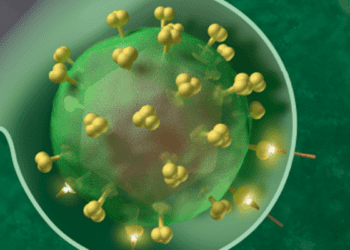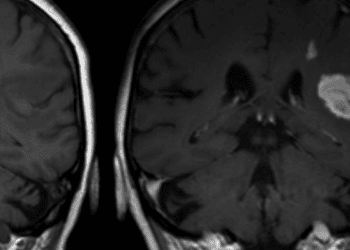Certain genotypes of OXTR gene may increase risk of postpartum hemorrhage
Oxytocin receptor single nucleotide polymorphism predicts atony-related postpartum hemorrhage
1. Homozygotes and carriers of allele A of the OXTR gene were found to be at greater of risk and severity of postpartum hemorrhage (PPH) and require second-line treatments for PPH
Evidence Rating Level: 2 (Good)
Postpartum hemorrhage (PPH), defined by blood loss causing signs/symptoms of hypovolemia and/or 1000 mL of blood loss in 24 hours after birth, is a primary contributor to maternal morbidity and mortality. The etiology of PPH is multifactorial and includes uterine atony, adherent placenta, trauma, and blood disorders. Current tools that are used to predict PPH still miss 40% of PPH cases. Oxytocin is routinely given after birth to help prevent PPH, as it binds to the myometrial oxytocin receptor (OXTR) and causes uterine contraction. Two identified alleles, A and G, are associated with differential OXTR gene expression and it is believed that genetic differences in the oxytocin system could serve as risk factors for PPH. This case-control study involved 95 patients who underwent vaginal birth at a gestational age of at least 37 weeks. Cases were defined as those who had either 1000mL or more of blood loss or had heavy bleeding where they required additional uterotonic treatment. Controls were matched and genotypes from maternal blood samples were taken during the 2nd post-partum month. Genotype distributions included 40% of G/G individuals, 50.5% of A/G individuals and 9.5% of A/A individuals. A/A homozygotes were found to be most likely to have PPH (55.6% vs 12.5% for AG and 7.9% of GG, p=0.005). A carriers were also found to have higher amounts of blood loss (p<0.01) even when controlled for factors such as parity, intrapartum oxytocin, self-reported ancestry, active management of third stage or genital tract lacerations. A carriers also had a 79% higher risk of needing one or more second line treatment for PPH. Interestingly however, GG participants were found to have greater blood loss with higher levels oxytocin exposure. This study was limited in sample size as well as examined only one single nucleotide polymorphism, and only focused on atony as an etiology for PPH. It does show however, that genetic variants of the OXTR gene may be associated with a greater risk of PPH, and may be used as a predictor for bleeding risk in the postpartum period.
Image: PD
©2022 2 Minute Medicine, Inc. All rights reserved. No works may be reproduced without expressed written consent from 2 Minute Medicine, Inc. Inquire about licensing here. No article should be construed as medical advice and is not intended as such by the authors or by 2 Minute Medicine, Inc.









